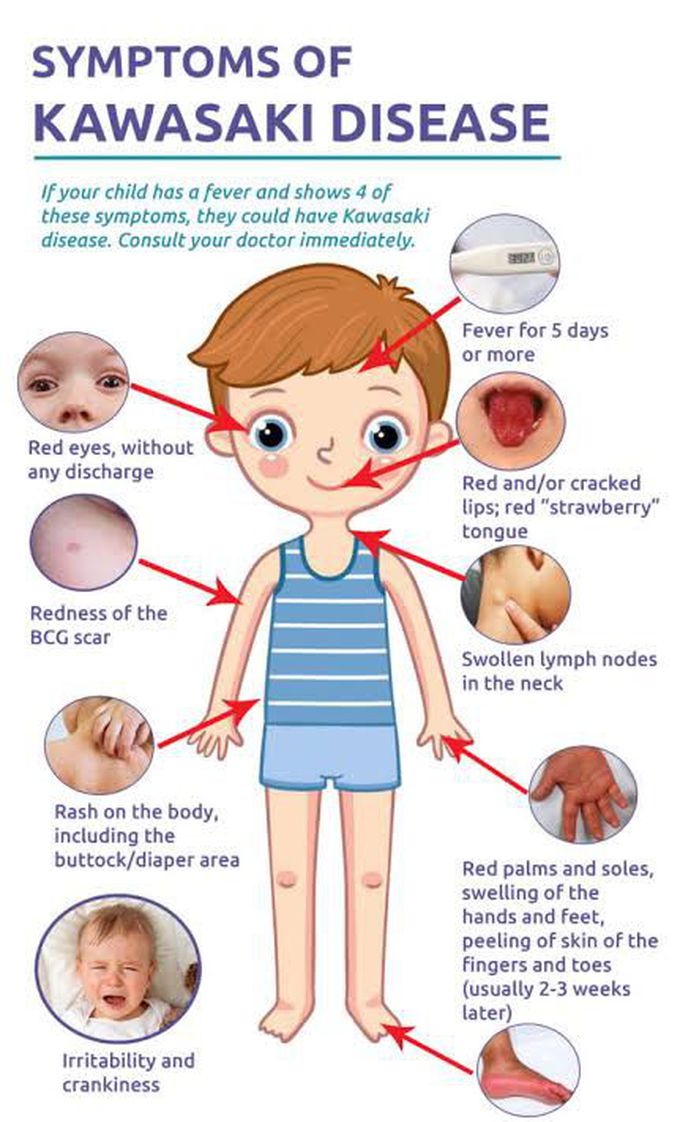


Symptoms of kawasaki disease
To receive a diagnosis of Kawasaki disease, a child usually will have a fever greater than 102.2 F (39 C) for five or more days and at least four of the following signs and symptoms. A rash on the main part of the body or in the genital area An enlarged lymph node in the neck Extremely red eyes without a thick discharge Red, dry, cracked lips and an extremely red, swollen tongue Swollen, red skin on the palms of the hands and the soles of the feet, with later peeling of skin on fingers and toes The symptoms might not occur at the same time, so it's important to let your child's health care provider know about a sign or symptom that has gone away. Other signs and symptoms that might develop include: Abdominal pain Diarrhea Irritability Joint pain Vomiting

